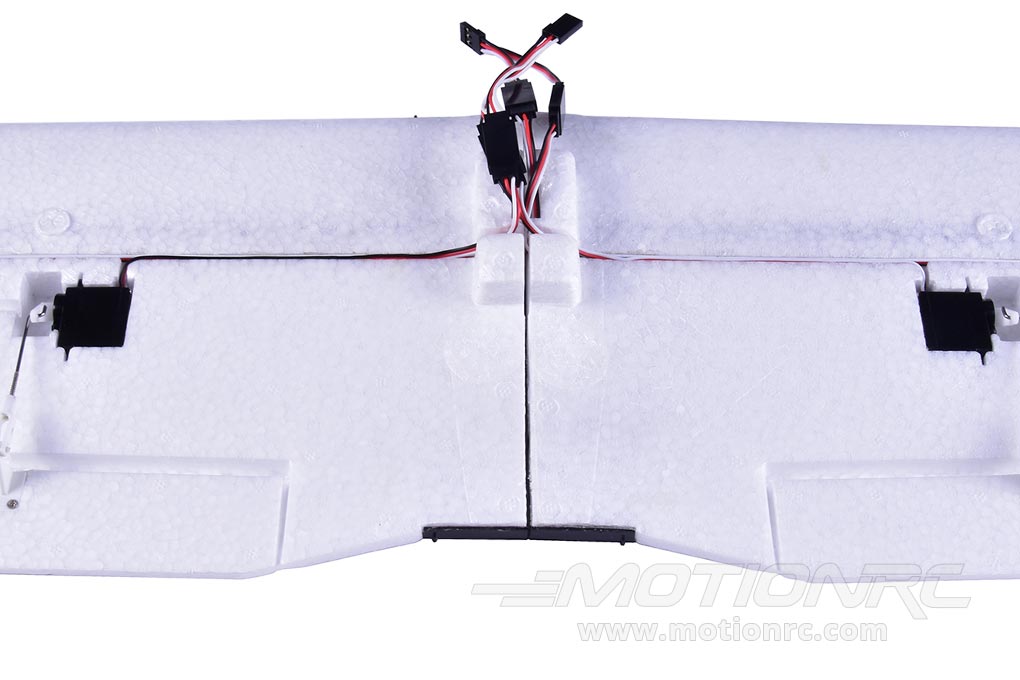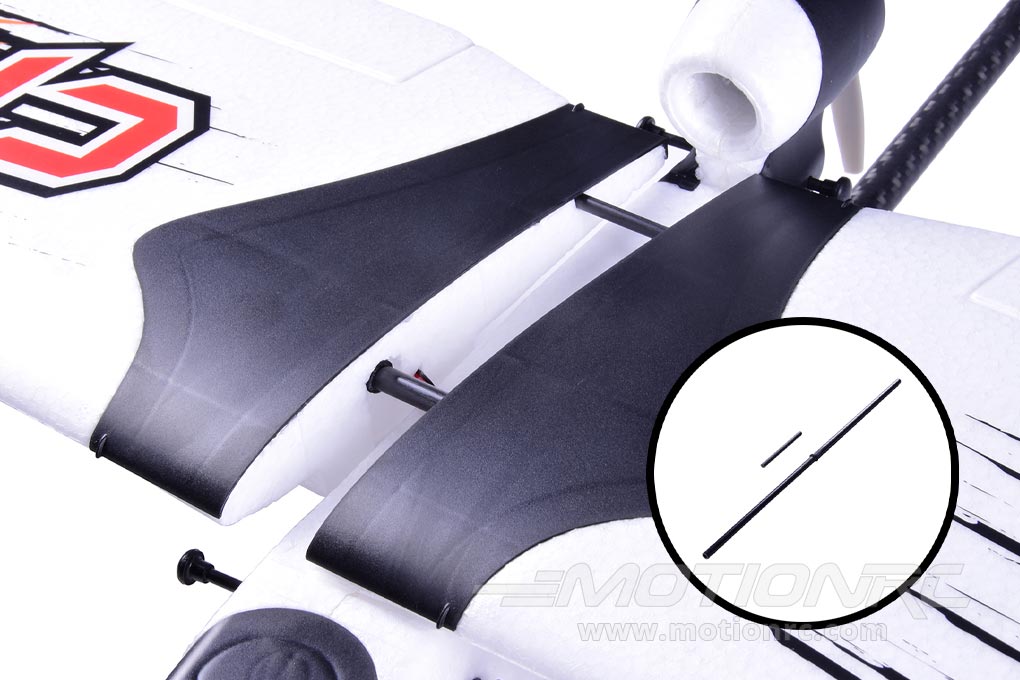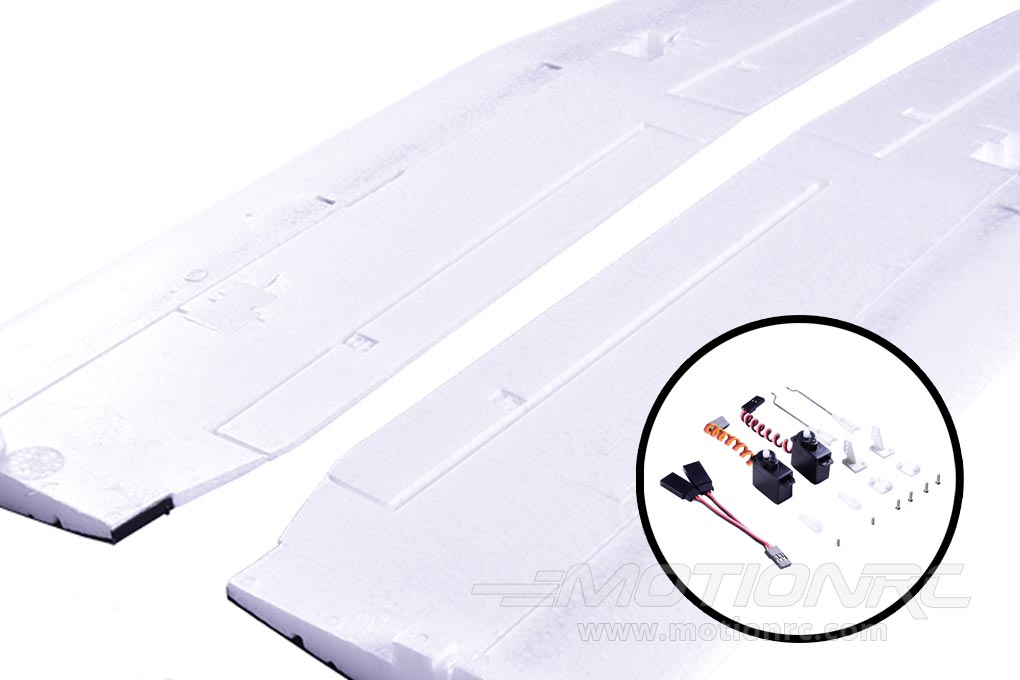The Skynetic Cardinal is a beginner glider with tri-dihedral to increase wing performance and stability. The Cardinal comes with a MS2208 Kv1550 brushless outrunner motor and 6x4 propeller to get you up to altitude in no time to begin your search for thermals. Flaps are molded into the wings to help with slower flight and landings for beginners. Just add the flap kit for functionality (optional). The Cardinal is a fun, introductory glider for anyone that enjoys the tranquility of "surfing the wind."
.
 |
Easy Connect Wings The Skynetic Cardinal comes with easy connect wings for simplicity and convenience. |
 |
Accepts 3S 2200mAh LiPo Battery You can fit up to a 3S 2200mAh LiPo battery for extended flight times. |
 |
Carbon Rod The Cardinal includes a carbon rod joiner for added strength and reliability. |
 |
Flaps Optional The Cardinal comes with flap slots molded into the wings for slower flight and landings which are ideal traits for beginners. Just add the flap kit (optional). |
- Constructed of durable EPO and a large tri-dihedral wing for increased wing stability
- Brushless MS2208 Kv1550 outrunner motor to get up to altitude easily for soaring adventures
- Rubber-based impact nose covering provides added durability in case of hard landing or crash
- Cooling holes provide adequate air flow over the battery's surface and motor during flight
- Carbon rods strategically implemented throughout the model's structure for added durability
- Wings and tail assembly are easily removable for storage or transportation
- Weight counterbalance channel allows the use to add or remove weight for various battery capacities
- Carbon fiber wing spars for strength and durability
- Admiral 20 Amp ESC adds reliability and security
- Optional flaps molded into the wings, simply add the flap kit (sold separately)
- Skynetic Cardinal 1400mm (55.2") Wingspan - PNP
- Servos, motor, ESC pre-installed
- Owner's Manual
- 4 Channel radio - select a minimum 4 channel radio from our Radio Collection
- 4 Channel receiver - select a minimum 4 channel receiver from our Receiver Collection
- 3 Cell 11.1V 1600 - 2200 mAh Li-Po Battery with XT60 connector - we recommend the Admiral 2200mAh 3S 11.1V 35C LiPo Battery with XT60 Connector
- 3 Cell compatible battery charger - select a minimum 3 cell (3S) charger from our Charger Collection
AGE LEVEL :10 and up
SKILL LEVEL :Beginner
BUILD TIME :1 Hour
| Model Scale | N/A |
| Wingspan | 1400mm / 55.1in |
| Length | 1030mm / 40.5in |
| Weight | 630-700g |
| CG (Center of Gravity) | 50-65mm from the leading edge of the wing at the root |
| Power System | MS2208 Kv1550 Brushless motor (installed) |
| Electronic Speed Control | 20 Amp brushless ESC with XT60 connector (installed) |
| Propeller / EDF | 6 x 4 Electric propeller |
| Servos |
|
| Landing Gear | None |
| Required Battery | 3 Cell 11.1V 1600 - 2200 mAh Li-Po battery with XT60 connector (required) |
| Required Radio | 4+ Channel 2.4GHz (required) |
| Ailerons | Yes |
| Elevator | Yes |
| Rudder | Yes |
| Flaps | Optional |
| Lights | No |
| Hinge Type | Foam |
| Material | EPO Foam |
| Skill Level | Beginner |
| Build Time | 1 Hour |
| Recommended Environment | Outdoors |










Comment